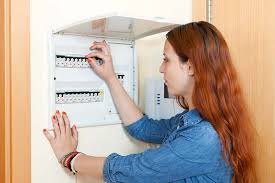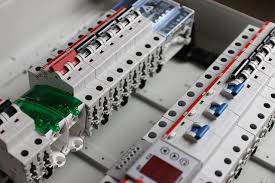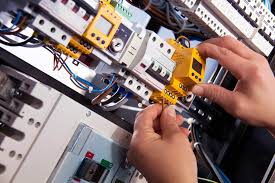How Much Does It Cost to Upgrade an Electrical Panel?
Whether you’re upgrading your home’s electrical panel for safety reasons, additional power or to sell your home, you’re probably wondering what this project will cost you at the end of the day.
Well, factors that affect the price to upgrade an electrical panel include:
The size of the new panel
Whether or not trenching is needed
Whether whole-home rewiring is needed
Additional outlets/fixtures
Whether the utility company requires a new meter
Whether you have overhead or underground service lines
Labor
The size of the new panel
Here’s the bottom line: The larger the new panel, the more it will cost. Electrical panels are sized in “amperage”, which measures the strength of the electric current that the panel sends into your home. Residential panel sizes can range anywhere from 100 to 400 amps.
Most homes built today have either 100-amp or 200-amp panels. The minimum required by the National Electric Code (NEC) is a 100-amp panel. But if your home was built in or before the 1960s, your home may have a very outdated 60-amp panel. Our suggestion? If you’re considering upgrading your home’s main panel and you have a 60-amp or 100-amp, upgrade to at least a 200-amp panel. A 200-amp panel can satisfy the electrical load of most residences and their modern electronics.
Whether or not trenching is needed
replace the lines running from the utility into your home to accommodate the new panel, this will cost an extra $1,500 to $3,000 to the price. Every main electrical panel, regardless of size, is fed power from the utility lines via electrical lines that are either underground or overhead. Those lines are designed to match the amperage of your panel. So, when you upgrade to a larger panel size, you’ll most likely need to replace those lines. And if you have underground service lines, this will involve trenching.
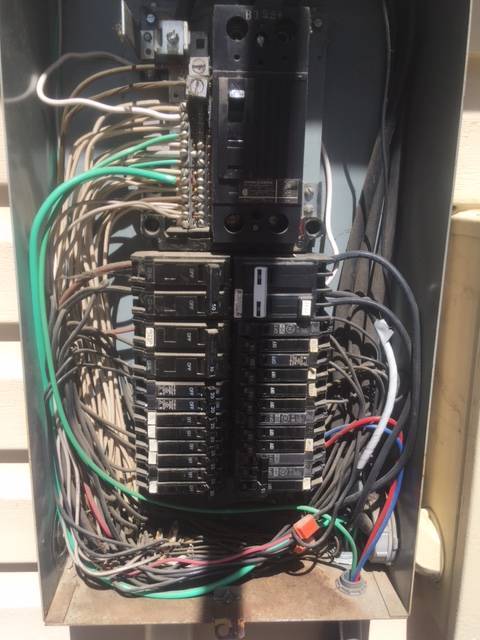
Electrical Panel Upgrade
Why You Should Consider Electrical Panel Upgrade
If your electrical panel is more than 25 years old it’s likely that it is no longer able to support the demands being made upon it by your home or business. There’s also a good chance that it is causing a cascade of problems that might seem of mysterious origin to you such as breakers tripping repeatedly, shocks from appliances and flickering lights
Residential upgrades
There are a fair number of homes in the GTA that still utilize old fashioned fuse panels. The time for this technology passed long ago and if you’re wondering why you keep blowing fuses it’s because your fuse panel was never designed to handle the type of demands put on it by modern technology
Still others have electrical panels that use circuit breakers but were installed more than 25 years ago. While slightly more efficient and effective than fuse panels these old panels are themselves prone to malfunctions that can cause house fires and leave your home open to damage from power surges.
Commercial upgrades
The typical medium sized business devours many times the electricity of a typical house. If your business is hosted by an older building with an obsolete electrical panel you could experience frequent blown circuits that seriously impact productivity. If your business is open to the public (like a restaurant, bar or retail outlet) and this happens the bad word of mouth alone could sink you
Some of the immediate benefits our customers notice from an electric panel upgrade include:
Smooth Consistent Power – No more flickering lights. No more blown circuits when you switch on the blender or ceiling fan. No more disappointed customers when the lights go out in the middle of their dinner. A new electrical panel will deliver the power you need where and when you need it.
Enhanced Safety – If you survived until today with a 30 year old electrical panel count your lucky stars because there are plenty of homeowners who saw their dreams go up in smoke due to fires caused by obsolete or defective panels
Future Proofing – Just as your home or business today consumes more electricity than it did 10 or 15 years ago so too will it, in all likelihood, require more electricity several years from now. An electrical panel upgrade from Hotwire gives you the ability to anticipate future needs so that your business or home continues to hum along even as demand increases.
Contrary to popular belief it doesn’t require opening up the walls to rewire your entire house. In the vast majority of cases the electrical panel can be replaced in a single day with the pros

Service Panel Guide
An electrical service panel, also known as a breaker box or fuse box, houses the circuit breakers. Your utility provider is responsible for delivering electricity to your property’s meter base; the meter base connects electricity to your service panel which then distributes and manages electrical current throughout your home or business.
You should always know where the service panel is located, keep the area easily accessible with no less than 3’ of clearance around it, and know how to operate it in case of an emergency. All wires should be attached to the service panel with cable clamps and securely fastened. There should be no open holes in the service panel box housing or any unused breaker space holes. These areas should be covered with knockout plugs or circuit breaker blanks.
Location of Service Panel
In a house, the service panel is typically located in the garage or basement. Where neither a garage nor basement are present (such as apartments), look behind open doors and inside closets. A typical residential or small business service panel is a metal box that contains rows of switches that are usually flipped in the same direction
Signs You May Need to Upgrade or Replace Your Service Panel
If you live in a home built before 1990, your main electrical service panel might have less than a 200 amp breaker. Changes in technology and increased use of electronic devices have rendered old electrical panels inadequate; they were not designed to carry the electrical load our current lifestyle requires
Most old electrical service panels were designed to carry up to 100 amps. Rewiring your home to meet current electrical demands and safety codes will significantly increase the safety of the electrical system in your home by reducing the risk of overheating and fire. It will also reduce problem such as tripped circuit breakers and dimming of lights when appliances are turned on and off

Residential Electrical Service Panel Upgrade
What is an electric panel upgrade?
The electric panel is the grey or metal box that holds all the circuit breakers and fuses. It is also known as the service panel of your home. An example of a circuit breaker/electrical service panel is shown in the image on the right. A panel upgrade simply refers to upgrading this system.
The electric panel regulates the electricity in your home. For example, if too much electricity is surged through a circuit, a circuit breaker in the electric panel stops the electricity from overloading the wiring. If the electric panel did not stop the overload, the wiring could catch fire. Therefore, maintaining a healthy electric panel can keep your family safe
When do I get an electric panel upgrade?
You might be wondering why people opt to upgrade their electric panels. There are many reasons you might need to upgrade a panel. For instance, if your house was rewired, your electrician might recommend upgrading your panel to make it up to date with the new wiring. A panel might also be suggested when you are adding new appliances (such as an air conditioner, refrigerator, or car charger) to your home. The new panel will ensure your circuits are equipped to handle this new demand of electricity.
Upgrading your electric panel is also important if your home is over 10 years old. With the advent of modern technology, homes are using more electrical gadgets than ever before. Many homes are not able to keep up with this new electrical demand. Old electric panels can malfunction or overload, which can spark a fire. Therefore, upgrading your electric panel to meet the modern energy demands can keep your family safe.
Here are some signs to know it’s time to upgrade your electrical panel:
You see corrosion/rust on the circuit breakers
Your electric panel makes crackling sounds
Your electric panel feels warm to the touch
Your home has a 60-amp or 100-amp electrical service
Your electric panel has a split-bus panel or a fuse block panel, and no main breaker
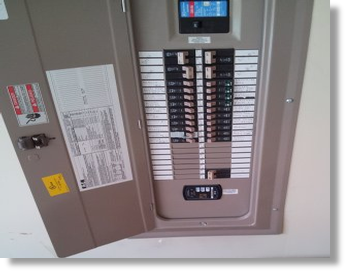
Electrical Code Upgrades
Is it time to consider electrical code upgrades for your home? Some of the potential fire causes listed included:
Inadequate wiring and panel breakers
improper installation of electrical panels
Defective power outlets
Insufficient electrical code updates
Why do electrical code updates matter?
regular electrical code updates are meant to guide the electrical industry while keeping them up to date and informed with changes and amendments that affect the function of regulations. These modifications are made from time to time to reflect new information that the industry as a whole has recognized.
The importance of electrical code update information?
The electrical code was devised to establish safe work standards and to improve the awareness and prevention of electrical hazards and fires caused by electricity. Having your home updated to meet current electrical code standards means that you are providing your family with the best possible protection from electrical hazards, and protecting your home from potential property damage.
Keeping current with electrical code updates!
By doing so, we know that our skills and regulation information are always current and that whatever work we perform on your property will be conducted safely and effectively. We also offer panel upgrade services and whole house surge protection!
As regulated professionals, we’re more valuable to you as a homeowner when we’re able to:
Ascertain that your home meets the necessary guidelines and coding for electrical panel installations and wiring.
Complete a home inspection to ensure that your electrical system is done correctly and is secure and safe.
Eliminate the possibility of delaying a home sale because of electrical discrepancies.
Ensure that no loss of life, injury or liability issues may arise from any electrical work completed in your home.
